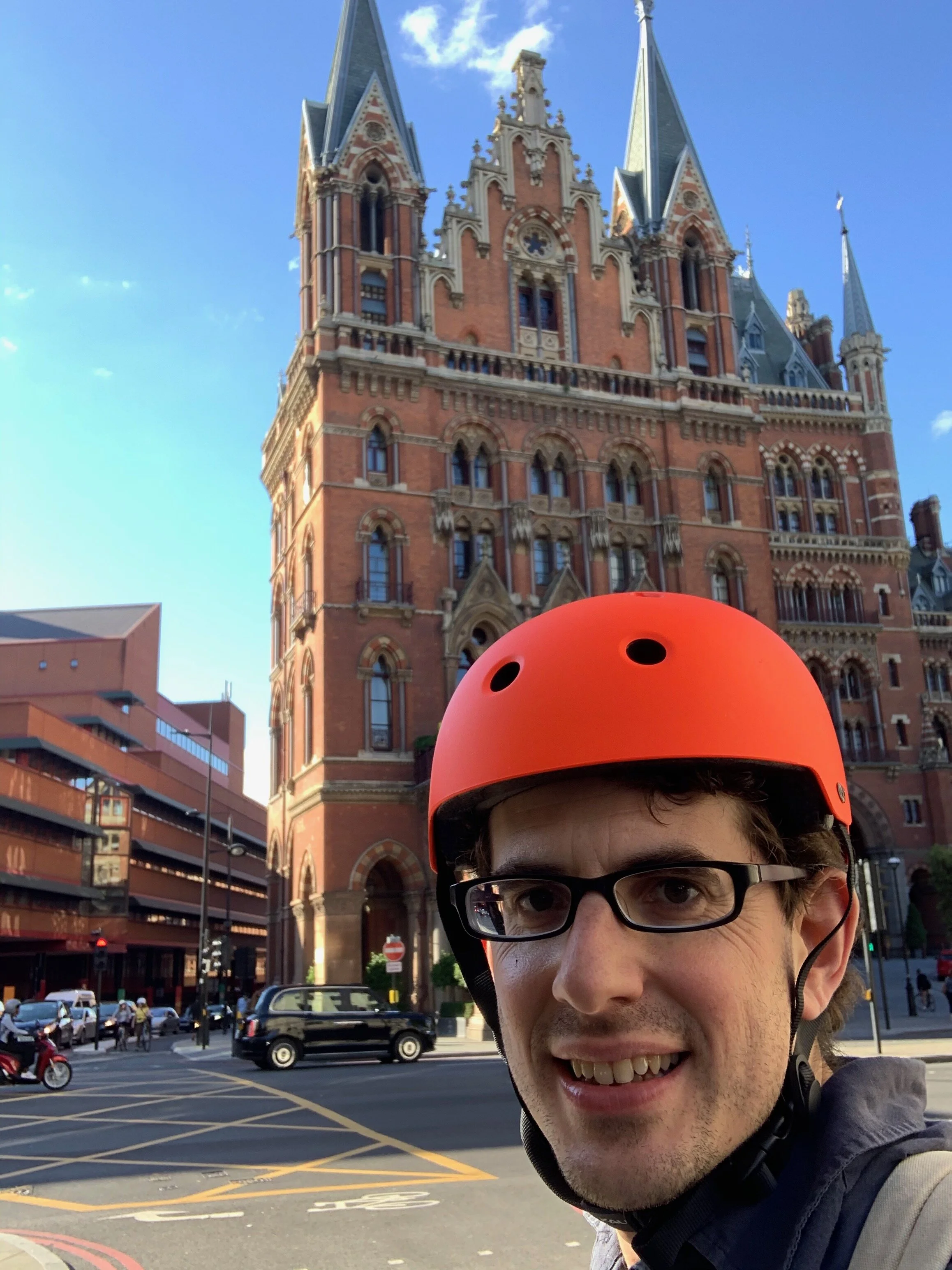Getting started cycling: top tips from a fellow newbie
6 tips to newbies from a nearly newbie on getting going on two wheels
It’s not essential to ride a bike to live car-free (we were both car-free and bike-free for nearly two decades) but a bike certainly helps - especially during a lockdown..
However, for a newbie, the world of cycling can look a bit intimidating.
A satisfied selfie on his first ever cycle ride into Zone 1
Here are the things we learned:
1) Buy a ‘hybrid’ bike
Cycling people make it sound very complex. But if, like us, you simply want an ‘ordinary’ bike that’s fine for taking the kids out for a daytrip but also cycling around the local countryside, then a ‘hybrid’ bike is fast enough on roads and stable enough in the countryside. Here are examples at all different price points
Beyond that, I wouldn’t worry to much about scope and spec - just spend whatever you can afford.
2) You don’t need too much kit
These are things you need to budget:
a) Bikes. Obvs.
b) Helmets for everyone who’ll be cycling. Buy brand new - it’s not worth taking the risk on a second-hand helmet having been fractured by a previous user
c) Rack and panniers. I strongly recommend getting a rack fitted and putting a set of panniers (basically big bags) on the side. Suddenly, the bike is an easy way to do the supermarket top-up shop. If you don’t want to fit them yourself (I didn’t!) then your local bike shop will.
d) Lights, as not being limited to daylight hours is invaluable.
e) A hi-vis vest. This doesn’t mean expensive cycling clothes: a cheap hi-vis vest costs £3 online.
f) A pump for ensuring the tyres stay inflated
g) Lock and chain. This is the only one where I recommend spending lots of money. Buy a big solid chain and a big meaty lock. After all, £50 now is better than a new bike later.
All this stuff can be found online through simple searches or via your local bike shop - list here.
Here’s what you don’t need:
a) Padded shorts or a special saddle. When you first get your bike, your bum will be agony for the first two weeks. Then, miraculously, it feels fine. You know the person who bought special shorts and told you how essential they were? Well, their posterior would have been resolved in their existing jeans, had they shown a bit more patience. Save your money.
b) Lycra. If you’re going to be competing with your cycling-crazy friends on Strava, by all means improve your performance any way you can. Lycra, special water bottles and anabolic steroids will all help, so I’m told. But those of us for whom a bike is a form of transport can spend our money elsewhere.
This doesn’t need to be you
c) Storage box. We agonised for years (literally!) about whether to get bikes, with the biggest issue being where to keep the damned things. We live in a pretty dinky three bed terrace and we couldn’t work out where on earth four bikes would fit. In the end, we went for the side return under a tarpaulin. It’s not ideal, but it’s fine.
3) Stretches aren’t complex
When we started cycling, I was worried about stretches. They seemed to be a ‘thing’ and, as a chronic non-exerciser, I was worried that I’d tear all kinds of muscles I didn’t know I had.
I made the mistake of looking online and found all kinds of intimidating videos by 40-something men in lycra and coloured goggles showing how they spend an hour twisting themselves in knots after every bike ride.
However, this article seemed much more sensible. The first few times I went for longer journeys (15-20 miles), I did these simple stretches before and after. Then I stopped altogether. It was fine.
4) Cycle route planning is a nightmare
One of hundreds of quiet, cycle-friendly streets now found throughout London. But where are they??
It’s a real shame. London now has great, safe cycle routes all over the place but the route planning, numbering and signage is a mess. I’m going to do another post on this in future but, for now, don’t worry about the terrifying main road that you think you’ll need to use. In most places, there are quiet, safe alternatives and I’ll post help on how to find them.
5) Your local council will train you for free
I (re)started cycling during lockdown, so couldn’t benefit. But our kids both got free training from the local council and I came incredibly close to arranging it last year. The team were unbelievably friendly and accommodating and did a great job getting our kids wobbling on two wheels. You can find your local training here.
6) Simple repairs are free
Most local councils run “Dr Bike” sessions at which a mechanic will take a look at your bike and fix any minor issues you’re having (or just confirm that it’s all hunky dory). I can’t find a global list of Dr Bike sessions but if you search “Dr Bike [borough name]”, you’ll see if your borough does them. Lambeth, Greenwich, Camden, Hackney and many others all do.
I’m sure you’ve got loads of other questions but hopefully this gives you a good starting position. I know it’s a cliche, but the most important thing is to just start. It feels so much easier once you get going.



